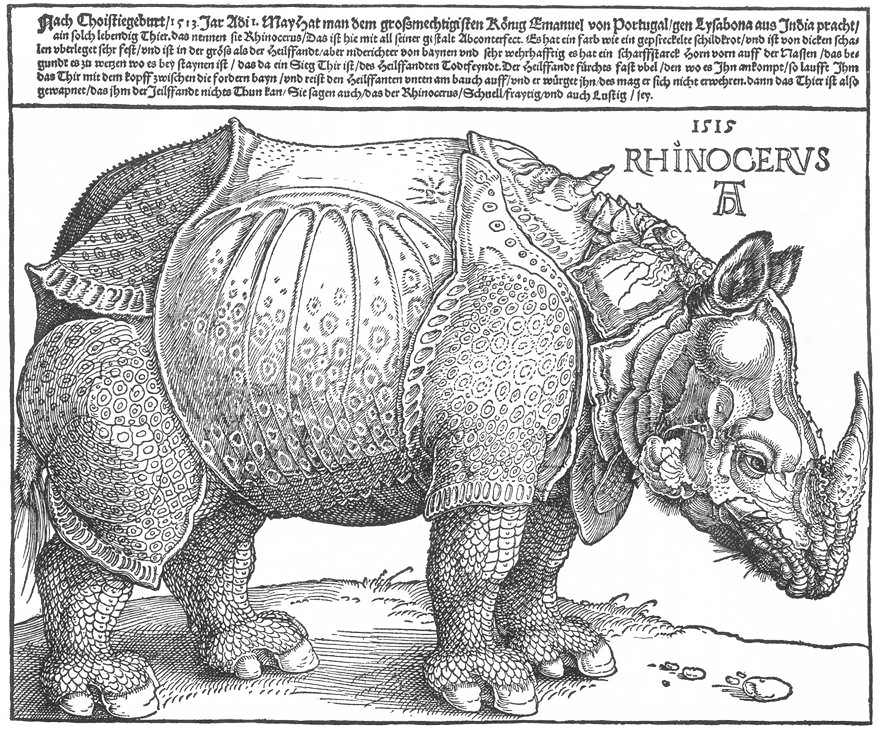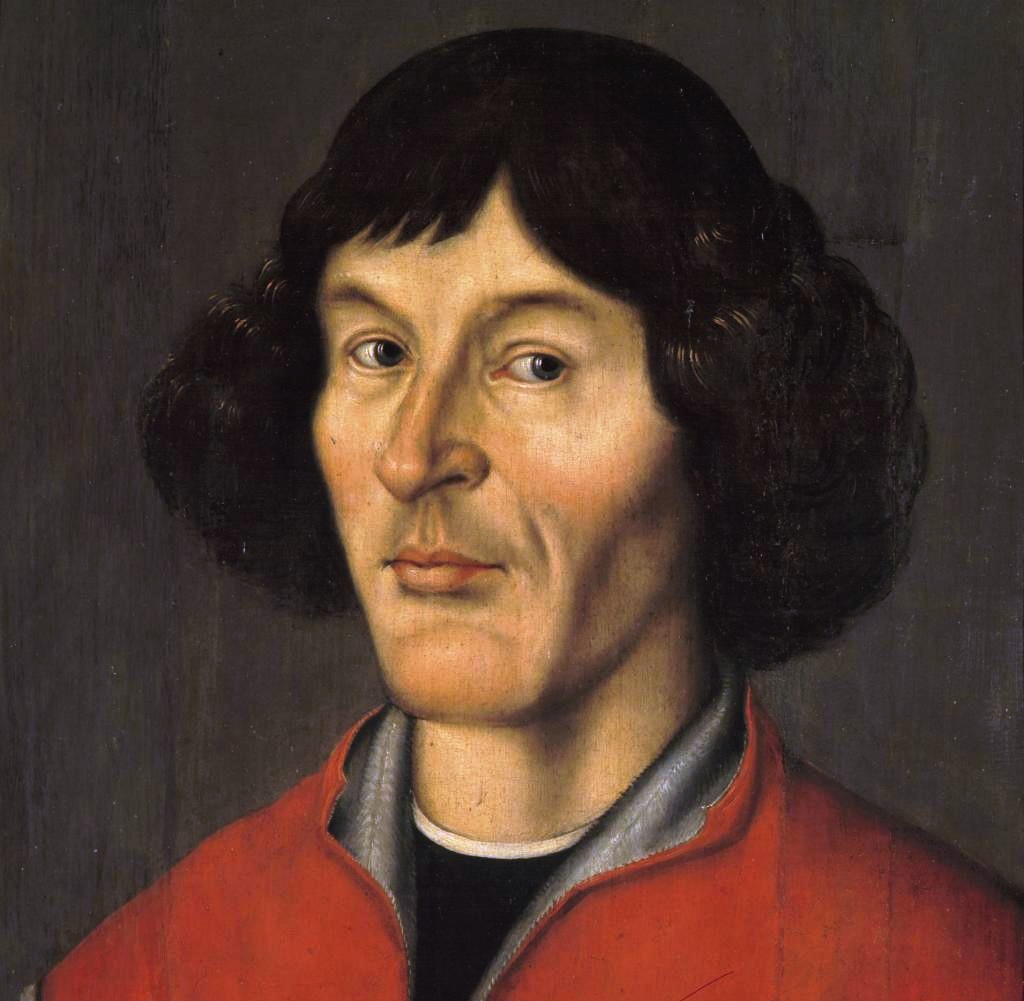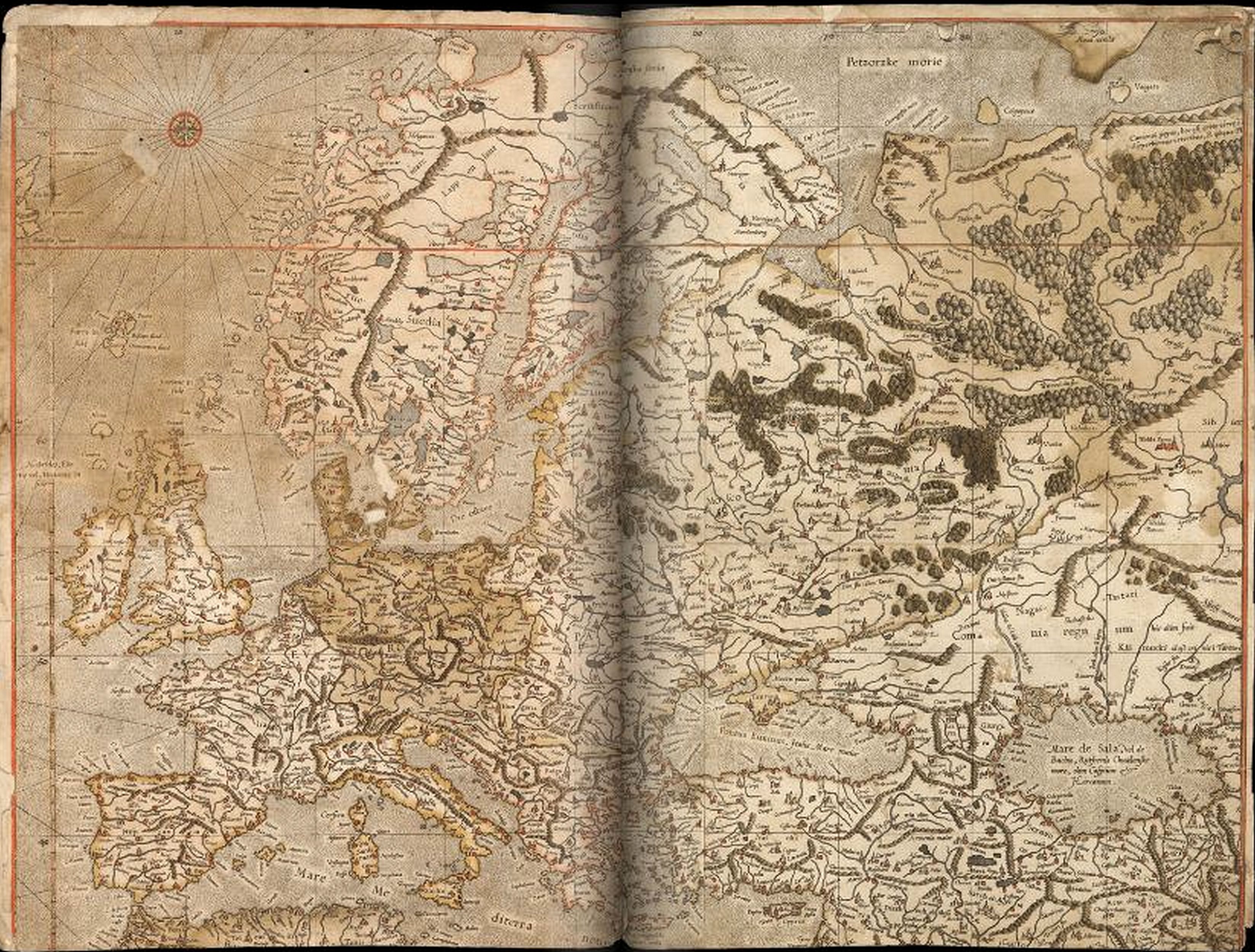List of Renaissance Mathematicians (part 2)
12. Dürer
Biography in Dictionary of Scientific Biography
Encyclopaedia Britannica
(also:
Academic Edition,
requires campus password)
Crater Dürer on Mercury
MACTUTOR.
Albrecht Dürer
Born: 21 May 1471 in Imperial Free City of Nürnberg (now in Germany)
Died: 6 April 1528 in Imperial Free City of Nürnberg (now in Germany)
Summary:
German artist. Known for his work as an engraver.
The foundations of descriptive geometry are laid in Dürer's treatise on human proportions published in Nuremberg after his death in 1528.
BRITANNICA.
Albrecht Dürer
Born: May 21, 1471, Imperial Free City of Nürnberg [Germany]
Died: April 6, 1528, Nürnberg
Summary:
painter and printmaker generally regarded as the greatest German Renaissance artist.
His vast body of work includes altarpieces and religious works, numerous portraits and self-portraits.
WIKI.
Albrecht Dürer (äl'brekht dür'ur) (May 21, 1471 – April 6, 1528)
Summary:
German painter, printmaker, mathematician, and, with Rembrandt and Goya, the greatest creator of old master prints.
Born and died in Nuremberg, Germany.
Best known for his prints often done in series, including the Apocalypse (1498) and his two series on the passion of Christ, the Great Passion (1498–1510) and the Little Passion (1510–1511).
Best known individual engravings include Knight, Death, and the Devil(1513), Saint Jerome in his Study (1514) and Melencolia I (1514), which has been the subject of the most analysis and speculation. With his Four Horsemen of the Apocalypse (1497–1498), from the Apocalypse series, it is his most iconic image, followed by his "Rhinoceros" and his numerous painted self-portraits.
 Self-Portrait at age 28 (in 1500).
Self-Portrait at age 28 (in 1500).

 Melencolia I
Melencolia I



 Sample of other work.
Sample of other work.
13. Copernicus
Biography in Dictionary of Scientific Biography
Encyclopaedia Britannica
(also:
Academic Edition,
requires campus password)
Crater Copernicus
Crater Copernicus on Mars
MACTUTOR.
Nicolaus Copernicus
Born: 19 Feb 1473 in Torun, Poland
Died: 24 May 1543 in Frauenburg (now Frombork), Poland
Summary:
Polish astronomer and mathematician.
A proponent of the view of an Earth in daily motion about its axis and in yearly motion around a stationary sun.
This theory profoundly altered later workers' view of the universe, but was rejected by the Catholic church.
BRITANNICA.
Nicolaus Copernicus
Born: Feb. 19, 1473, Torun, Poland
Died: May 24, 1543, Frauenburg, East Prussia [now Frombork, Poland]
Polish: Mikolaj Kopernik
Summary:
Polish astronomer.
Proposed that the planets have the Sun as the fixed point (heliocentric);
that the Earth tturns once daily on its own axis;
and that very slow, long-term changes in the direction of this axis account for the precession of the equinoxes.
Copernicus probably hit upon his main idea sometime between 1508 and 1514, and during those years he wrote a manuscript usually called the Commentariolus (“Little Commentary”).
However, the book that contains the final version of his theory,
De revolutionibus orbium coelestium libri vi
(“Six Books Concerning the Revolutions of the Heavenly Orbs”), did not appear in print until 1543, the year of his death.
WIKI.
Nicolaus Copernicus (February 19, 1473 – May 24, 1543)
Summary:
Provided the first modern formulation of a heliocentric (sun-centered) theory of the solar system in
De revolutionibus orbium coelestium (On the Revolutions of the Celestial Spheres).
One of the great polymaths of the Renaissance.
A mathematician, astronomer, jurist, physician, classical scholar, governor, administrator, diplomat, economist and soldier.
Amid his extensive responsibilities, he treated astronomy as an avocation.
His formulation of how the sun rather than the earth is at the center of the solar system
came to mark the starting point of modern astronomy and, in turn, of modern science.
STANFORD.
Nicolaus Copernicus (1473-1543)
Summary:
A mathematician and astronomer.
Proposed that the sun was stationary in the center of the universe and the earth revolved around it. Disturbed by the failure of Ptolemy's geocentric model of the universe to follow Aristotle's requirement for the uniform circular motion of all celestial bodies and determined to eliminate Ptolemy's equant, an imaginary point around which the bodies seemed to follow that requirement, Copernicus decided that he could achieve his goal only through a heliocentric model.
Thereby created a concept of a universe in which the distances of the planets from the sun bore a direct relationship to the size of their orbits. At the time Copernicus's heliocentric idea was very controversial; nevertheless, it was the start of a change in the way the world was viewed, and Copernicus came to be seen as the initiator of the Scientific Revolution.












14. Michael Stifel
Biography in Dictionary of Scientific Biography
MACTUTOR.
Michael Stifel
Born: 1487 in Esslingen, Germany
Died: 19 April 1567 in Jena, Germany
Summary:
German mathematician who invented logarithms independently of Napier using a totally different approach.
WIKI.
Michael Stifel (1487 - April 19, 1567)
Summary:
A German mathematician.
Discovered logarithms and invented an early form of logarithm tables decades before John Napier.
Published "Arithmetica integra" in 1544.
Attempted to use the Bible to predict the apocalypse.
Predicted that Judgement Day would occur on October 19, 1533 at 8:00 AM.
When this prediction failed, he did not make any other predictions.
15. Adam Ries
Biography in Dictionary of Scientific Biography
MACTUTOR.
Adam Ries
Born: 1492 in Staffelstein (near Bamberg), Upper Franconia (now Germany)
Died: 30 March 1559 in Annaberg, Saxony (now Annaberg-Buchholz, Germany)
Summary:
Adam Ries was a German mathematician who published one of the first widely available arithmetic texts.
WIKI.
Adam Ries (March 27, 1492 – March 30, 1559)
better known by the name Adam Riese
Summary:
German mathematician.
Adam Ries did not publish his books in Latin, the usual practice at the time, but in German. This way he reached a wider audience and, like Martin Luther, contributed to the unification of the German language.



16. Tartaglia
Biography in Dictionary of Scientific Biography
Encyclopaedia Britannica
(also:
Academic Edition,
requires campus password)
MACTUTOR.
Nicolo Fontana Tartaglia
Born: 1500 in Brescia, Republic of Venice (now Italy)
Died: 13 Dec 1557 in Venice, Republic of Venice (now Italy)
Summary:
Italian mathematician.
Famed for his algebraic solution of cubic equations which was eventually published in
Cardan's Ars Magna.
BRITANNICA.
Niccolò Fontana Tartagli
Born: 1499, Brescia, republic of Venice [Italy]
Died: Dec. 13, 1557, Venice
also spelled Tartalea
Summary:
Italian mathematician who originated the science of ballistics.
WIKI.
Niccolò Fontana Tartaglia (1499, Brescia, Italy–December 13, 1557, Venice, Italy)
Summary:
Mathematician, an engineer (designing fortifications),
surveyor (of topography, seeking the best means of defense or offense)
and bookkeeper from the then-Republic of Venice (now part of Italy).
Published many books, including the first Italian translations of Archimedes and Euclid, and an acclaimed compilation of mathematics.
The first to apply mathematics to the investigation of the paths of cannonballs; his work was later validated by Galileo's studies on falling bodies.


17. Cardano
Biography in Dictionary of Scientific Biography
Encyclopaedia Britannica
(also:
Academic Edition,
requires campus password)
Crater Cardanus and Rima Cardanus
MACTUTOR.
Girolamo Cardano
Born: 24 Sept 1501 in Pavia, Duchy of Milan (now Italy)
Died: 21 Sept 1576 in Rome (now Italy)
Summary:
Girolamo Cardan or Cardano was an Italian doctor and mathematician who is famed for his work Ars Magna which was the first Latin treatise devoted solely to algebra. In it he gave the methods of solution of the cubic and quartic equations which he had learnt from Tartaglia.
BRITANNICA.
Girolamo Cardano
Born: September 24, 1501, Pavia, duchy of Milan [Italy]
Died: September 21, 1576, Rome
also Girolamo also spelled Gerolamo , English Jerome Cardan
Summary:
Italian physician, mathematician, and astrologer.
Gave the first clinical description of typhus fever.
His book Ars magna (The Great Art; or, The Rules of Algebra)
is one of the cornerstones in the history of algebra.
WIKI.
Gerolamo Cardano or Girolamo Cardano, in English Jerome Cardan, or in Latin Hieronymus Cardanus (September 24, 1501 - September 21, 1576)
Summary:
Celebrated Italian Renaissance mathematician, physician, astrologer, and gambler.




18. Robert Recorde
Biography in Dictionary of Scientific Biography
Encyclopaedia Britannica
(also:
Academic Edition,
requires campus password)
MACTUTOR.
Robert Recorde
Born: 1510 in Tenby, Wales
Died: 1558 in London, England
Summary:
Recorde was a Welsh doctor and mathematician who invented the "equals" symbol '=' which appears in his book The Whetstone of Witte (1557).
BRITANNICA.
Robert Recorde
Born: c. 1510, Tenby, Pembrokeshire, Wales
Died: June 1558, London, England
Summary:
Physician, mathematician, and author of introductory mathematics textbooks.
WIKI.
Robert Recorde (c. 1510 – 1558)
Summary:
Welsh physician and mathematician.
Introduced the "equals" sign (=) in 1557.
It appears that he acted as physician to King Edward VI and to Queen Mary, to whom some of his books are dedicated.
Also controller of the Royal Mint.
After being sued for defamation by a political enemy,
was arrested for debt and died in the King's Bench prison, Southwark, in 1558.

19. Gerardus Mercator
Biography in Dictionary of Scientific Biography
Encyclopaedia Britannica
(also:
Academic Edition,
requires campus password)
Crater Mercator and Rupes Mercator
MACTUTOR.
Gerardus Mercator
Born: 5 March 1512 in Rupelmonde, Flanders (now Belgium)
Died: 2 Dec 1594 in Duisburg, Duchy of Cleves (now Germany)
Summary:
Flemish map-maker and geographer.
Best known for the map projection which bears his name.
BRITANNICA.
Gerardus Mercator
Born: March 5, 1512, Rupelmonde, Flanders [now in Belgium]
Died: December 2, 1594, Duisburg, Duchy of Cleve [Germany]
original name: Gerard De Cremer, or Kremer?
Summary:
Flemish cartographer.
Most important innovation a map
with Mercator projection
(parallels and meridians as straight lines,
locally accurate ratio of latitude to longitude).
He also introduced the term atlas.
WIKI.
Gerardus Mercator (March 5, 1512 – December 2, 1594)
Summary:
Belgian cartographer. Remembered for the Mercator projection named after him.














20. Lodovico Ferrari
Biography in Dictionary of Scientific Biography
Encyclopaedia Britannica
(also:
Academic Edition,
requires campus password)
MACTUTOR.
Lodovico Ferrari
Born: 2 Feb 1522 in Bologna, Papal States (now Italy)
Died: 5 Oct 1565 in Bologna, Papal States (now Italy)
Summary:
Ferrari was an Italian scholar who started as Cardan's secretary and went on to devise the solution of the quartic equation.
BRITANNICA.
Lodovico Ferrari
Born: Feb. 2, 1522, Bologna, Papal States [Italy]
Died: Oct. 5, 1565, Bologna
also spelled Ludovico Ferraro
Summary:
Italian mathematician.
The first to find an algebraic solution to the or quartic equation.
WIKI.
Lodovico Ferrari (February 2, 1522 – October 5, 1565)
Summary:
Italian mathematician.
Began his career as the servant of Gerolamo Cardano.
Extremely bright, so Cardano started teaching him mathematics.
Aided Cardano on his solutions for quadratic equation and cubic equations, and was mainly responsible for the solution of quartic equations that Cardano published.
While still in his teens, was able to obtain a prestigious teaching post after Cardano
resigned from it and recommended him.
Retired young (only 42) and quite rich.
Moved back to his home town to take up a professorship of mathematics in 1565.
Shortly thereafter, he died of white arsenic poisoning, allegedly murdered by his sister.
 Self-Portrait at age 28 (in 1500).
Self-Portrait at age 28 (in 1500).

 Melencolia I
Melencolia I



 Sample of other work.
Sample of other work.


































